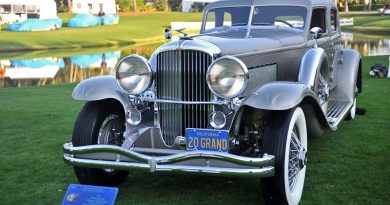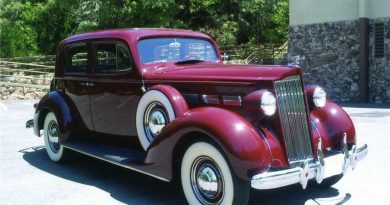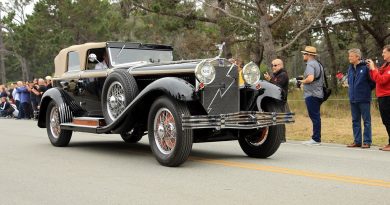1929 DuPont Model G Speedster
The Du Pont Speedster was one of the most desirable American sports cars produced in the late 1920s.
Its aristocratic name and racy look made it the darling of Hollywood’s elite after Mary Pickford bought an early two-seater for her husband, Douglas Fairbanks.
This two passenger DuPont Model G Speedster was finished on June 25, 1929 for Stafford Lambert, for whose family Lambert – St. Louis International Airport is named. Stafford Lambert cut a dashing figure. He was an aviator and former President of the Lambert Engineering Company. He flew airplane stunts with Charles Lindbergh, dated Elizabeth Taylor, and went skeet shooting with President Dwight Eisenhower. At age 19, he became the youngest licensed transport pilot in St. Louis. He survived eight plane crashes with only minor injuries and was a test pilot for the U. S. Air National Guard. He served with the Navy during World War II. It is most fitting that a dashing figure such as Lambert would want a dramatically exciting car like the DuPont two passenger Speedster. The existence of this car is unknown. The original build sheet shows that the car is essentially as presented. This is probably because most of its life, it was spent in a heated-air conditioned air hangar in St. Louis.
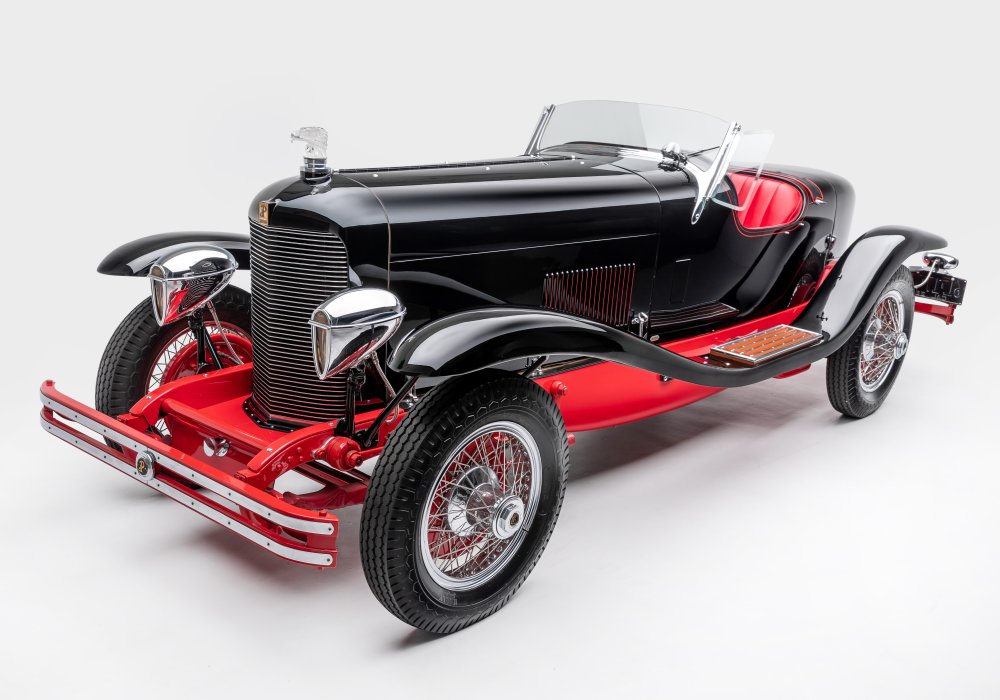
The Model G really put duPont on the map, with its 5.3-litre Continental straight-eight.
Combining that engine with hydraulic brakes and shock absorbers, plus a Warner four-speed constant-mesh gearbox, duPont had a chassis with the quality to match the coachwork by George Briggs Weaver, a new recruit from the Rhode Island School of Design.
From the outset Paul du Pont had insisted on distinctive styling, fronted by a tall, painted radiator shell.
However if a customer requested it be chrome-plated, and many did, he’d reluctantly agree.

The aluminum body was custom built by Massachusetts’ coachbuilder, Merrimac. The single-piece fenders and running boards are unusual for the time and add to the car’s streamlined art-deco design. While this particular paint scheme may not have been the original interior, it is typical for the time – deep black with red pinstripping detail.
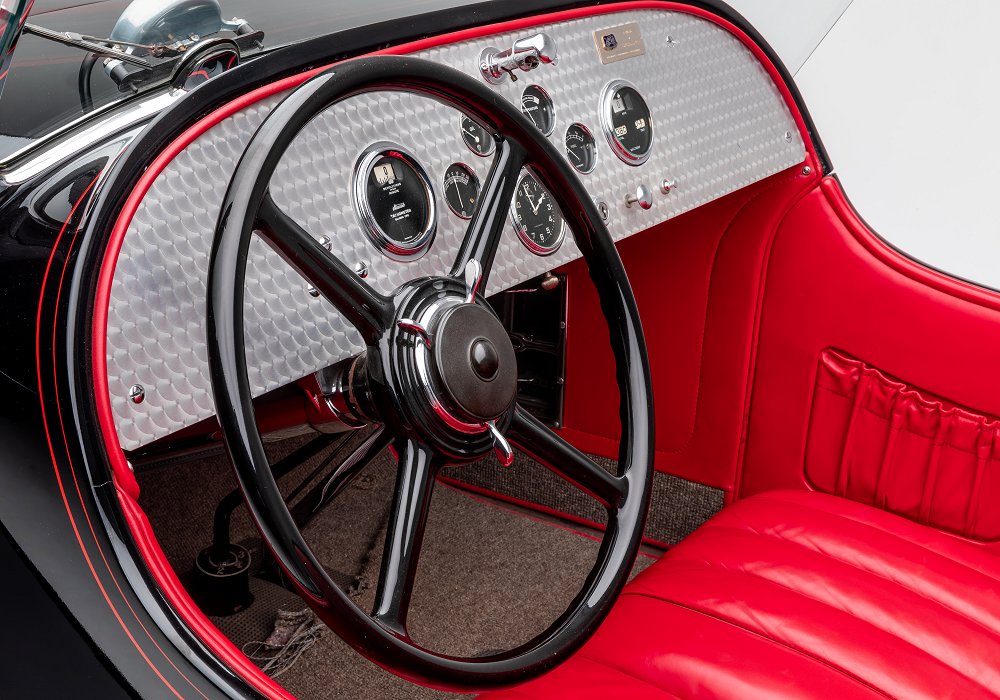
Driving the Du Pont offers a combination of surprising challenges and unexpected delights. Unlike modern cars that have a door for every seating position, accessing the cockpit involves entering through the single passenger side door and sliding across the bench seat and behind the wheel. Starting the engine requires careful manipulation of the choke and spark advance while pressing the floor-mounted starter button, but once underway there is seldom a need to make adjustments.
Though heavy, the Du Pont is not difficult to steer even at very low speeds and the engine has so much torque that shifting its four-speed transmission is rarely required, even going up steep grades. Yet while it has the appearance of a sports car, it is somewhat ponderous in corners and the hood is so long that it can be difficult to see the road ahead. It is not a car to be rushed.
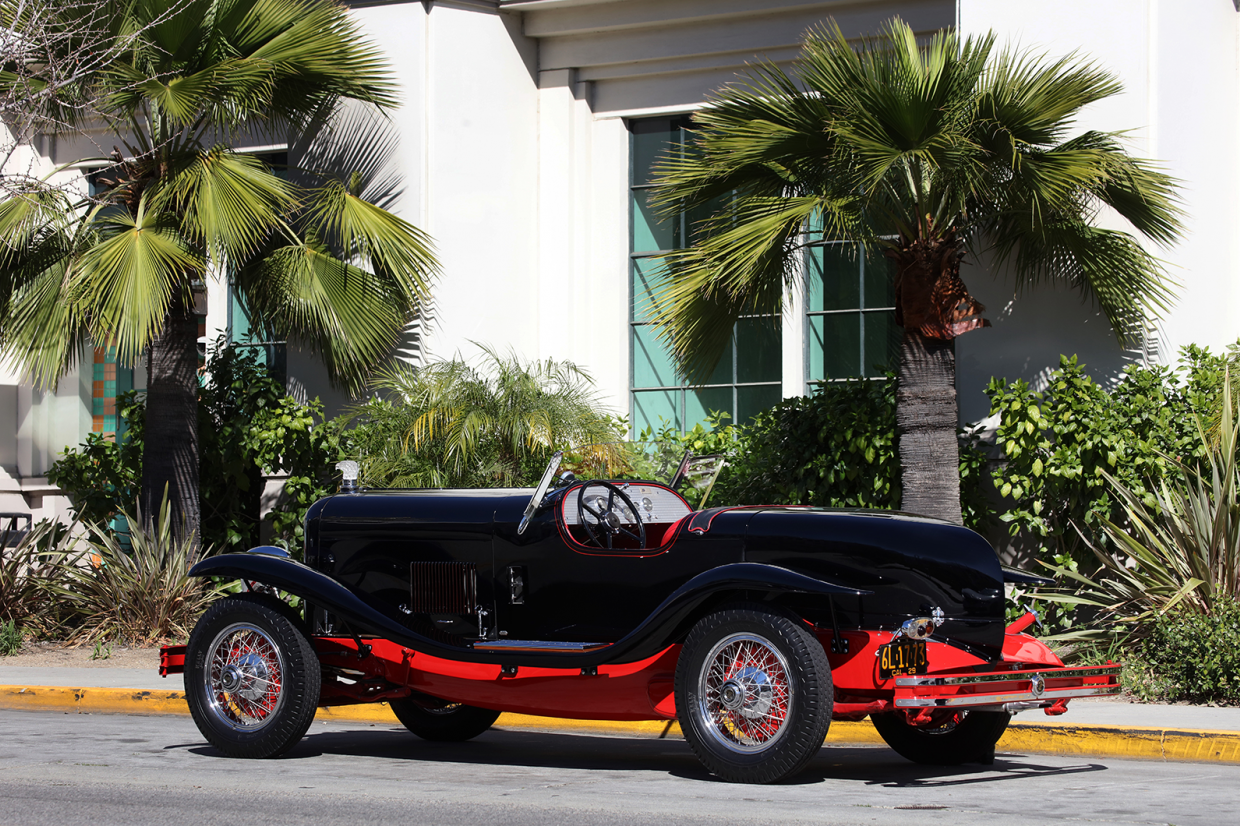
Featuring a “town and country” exhaust cut-out to allow gentlemen to operate quieter while in town and full-bore through the less-populated roads.

There’s no chance to truly test the duPont’s handling in the city and, frustratingly, the nearby canyon roads are beyond the museum’s limits.
Yet period reports relate an impressive balance, despite the nose-heavy stance.
With its Le Mans and Indy 500 ambitions, there is no doubt that the duPont Model G is a true sports car, and an unsung precursor to the post-war American renaissance led by Briggs Cunningham and Kurtis Kraft.


